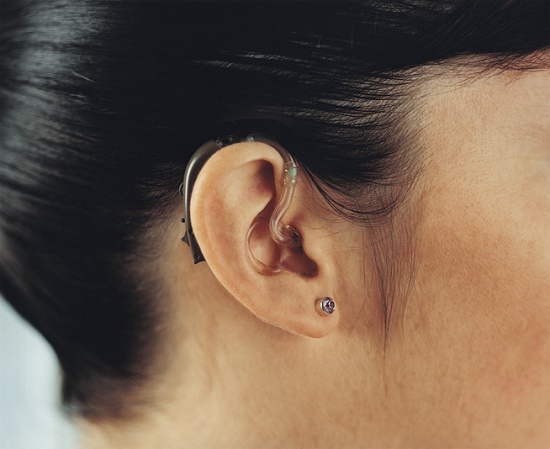
Have you ever had problems hearing in a congested room or restaurant but can hear just fine at home? Do you have particular trouble hearing higher-pitched voices or TV dialogue?
If so, you may have hearing loss, and hearing aids might be able to help you.
But how do hearing aids work exactly? Are they basic amplifiers, or something more complex?
This week we’ll be exploring how hearing aids work and how they are a great deal more sophisticated than many people recognize. But first, let’s start with how normal hearing works.
How Normal Hearing Works
The hearing process starts out with sound. Sound is essentially a type of energy that travels in waves, like ripples in a pond. Things make sound in the environment when they trigger vibrations in the air, and those vibrations are ultimately captured and transferred to the ear canal by the outer ear.
Just after moving through the ear canal, the sound vibrations hit the eardrum. The eardrum then vibrates, creating and amplifying the original signal which is then transferred by the middle ear bones to the snail-shaped organ of the middle ear known as the cochlea.
The cochlea is filled with fluid and tiny nerve cells called cilia. The vibrations transferred from the middle ear bones agitate the fluid and stimulate the cilia. The cilia then conduct electrical signals to the brain and the brain interprets those signals as sound.
With most instances of noise-induced hearing loss, there is injury to the cilia. As a consequence, the arriving signal to the brain is weaker and sounds appear quieter or muffled. But not all frequencies are uniformly impaired. Frequently, the higher-pitched sounds, such as speech, are impacted to a greater degree.
In a noisy setting, like a restaurant, your ability to hear speech is weakened because your brain is acquiring a diminished signal for high-frequency sounds. At the same time, background noise, which is low-frequency, is getting through normally, drowning out the speech.
How Hearing Aids Can Help
You can understand that the solution is not simply amplifying all sound. If you were to do that, you’d just continue drowning out speech as the background noise grows to be louder in relation to the speech sounds.
The solution is selective amplification of only the sound frequencies you have a hard time hearing. And that is only possible by having your hearing professionally assessed and your hearing aids professionally programmed to boost these specific frequencies.
How Hearing Aids Selectively Amplify Sound
Today’s hearing aids consist of five interior parts: the microphone, amplifier, speaker, battery, and computer chip. But hearing aids are not just straightforward amplifiers—they’re sophisticated electronic devices that change the properties of sound.
This takes place by way of the computer chip. Everyone’s hearing is unique, like a fingerprint, and so the frequencies you need amplified will vary. The extraordinary part is, those frequencies can be identified exactly with a professional hearing test, technically known as an audiogram.
Once your hearing professional has these numbers, your hearing aid can be programmed to amplify the frequencies you have the most trouble with, improving upon speech recognition in the process.
Here’s how it works: the hearing aid picks up sound in the environment with the microphone and delivers the sound to the computer chip. The computer chip then translates the sound into digital information so that it can differentiate between different frequencies.
Then, based on the programmed settings, the high-frequency sounds are amplified, the low-frequency background sounds are suppressed, and the refined sound is sent to your ear via the speaker.
So will your hearing return perfectly to normal?
While your hearing will not entirely go back to normal, that shouldn’t prevent you from acquiring significant gains in your hearing. For the majority of people, the amplification supplied is all they need to understand speech and participate in productive and effortless communication.
Think about it this way. If your eye doctor told you that they could enhance your vision from 20/80 to 20/25, would you forgo prescription glasses because you couldn’t get to 20/20? Absolutely not; you’d be able to function perfectly with 20/25 vision and the gain from 20/80 would be substantive.
Are you set to see the gains you can achieve with contemporary hearing aids? Call us today!

